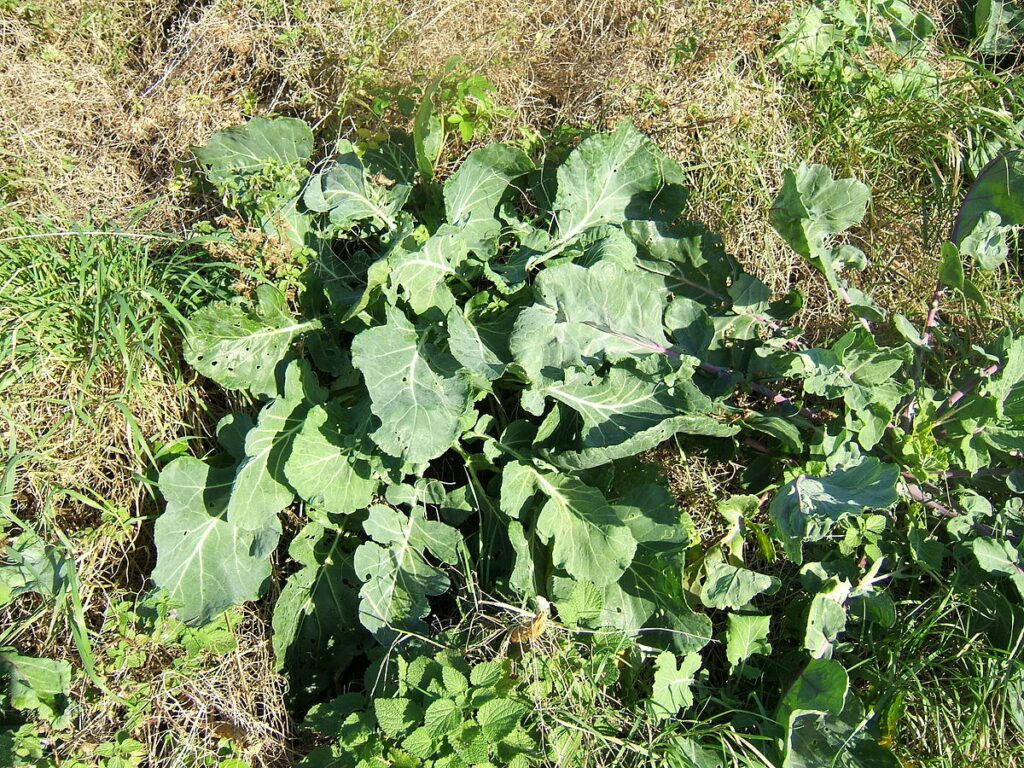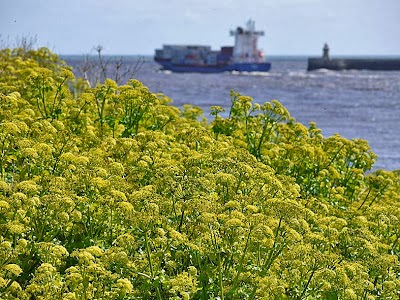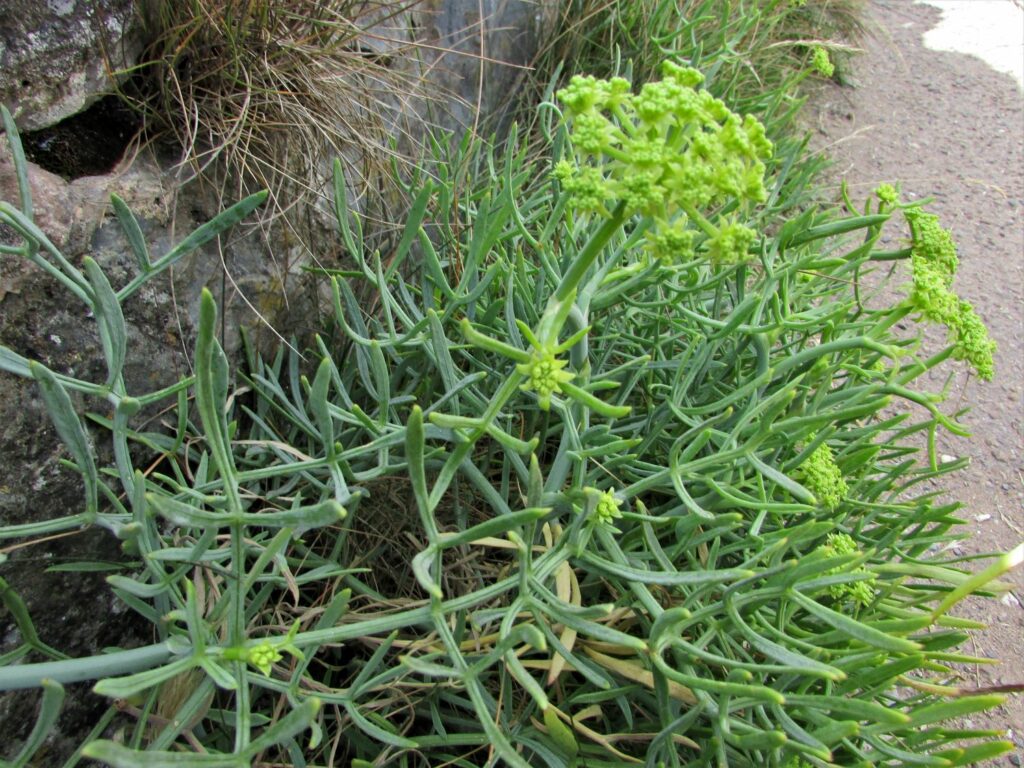Always be careful when cooking and eating wild plants. Many are toxic and easily mistaken.

Wild Cabbage Brassica oleracea — Towards the end of the summer and beginning of autumn, if you look up at the south bank of the Priory from the Haven you will see the entire slope covered in wild cabbage. It’s not very tasty stuff, but you can bet the austere monks lived on it. It may have been introduced to Britain by the Romans and it thrives on the promontory there because it has a high tolerance to lime and salt. As well as this, all the waste from the Priory fell down the south side into the ditch on the Haven. This south side is the lowest face but also the cleanest one, catching all the sunlight.
Alexanders Smyrnium olusatrum — In the spring, the south side of Tynemouth, all the way along the riverbanks, past Knotts Flats and up into Northumberland Park, is awash with the yellow flowers of Alexanders. It is still used as a vegetable. In fairly high-end restaurants you might see the stems served almost as a garnish, rather similar to celery. It is natural to the Mediterranean, North Africa and Italy especially, so is thought to have came here with the Romans, where it thrived so much that it is more common to Britain and Ireland today than where it originates. Alexanders are typically found around old monasteries and castles, because the monks and medieval folk ate it all the time.

I describe the plant in this video:
Rock Samphire Crithmum maritimum — a rare and tasty herb that people would risk their lives climbing sea cliffs to harvest. Often called sea asparagus or sea fennel, it is a protected plant so can’t be removed whole from where it grows. I’ve not located this plant around the beaches of Tynemouth but I’d be surprised if it hadn’t thrived there in the past as the conditions are perfect.

King Lear — Act 4, Scene 6
We often think of medieval cookery consisting of oats and gruel, turnips etc, and that formed a big part of sustenance, but there was a larger menu than we give them credit for, with no shortage of delicacies. There was a vast range of herbs used, not just for food, but medicines. While everyday life involved consumption of various and surprisingly high quality wines and beers. Mainstays native to these isles like rosehip, dandelion, elderberry and gooseberry were used in a range of condiments, jams and tinctures, while the monks would’ve also bred bees for honey and mead.
From archaeological finds, we know the ancients in the area survived on shellfish, including lobsters, which can be pulled from the rocks around Penbal Crag and the Black Middens. There was an extensive fishery overseen by the Priory, which would’ve yielded vast amounts of mackerel in summer and cod in winter, and the best prize of all, bountiful catches of salmon, kept in ponds below what is now Prior’s Park. There were also likely oyster farms dotted around.
As well as living off the livestock grazing the surrounding fields, the friars would have scavenged seabird eggs from the cliffs, snared rabbits and hunted deer and boar in the dene. Flour was ground at Milneton, a village that occupied the site of the Sailors’ Home today, while salt was harvested from the salt marsh at the bottom of Tanners Bank and extracted in coal-fired pans that burned 24/7. Both the salt and coal deposits were owned by the Prior.
So that’s a glimpse into the diet of the Tynemouth friars. There was definitely a pecking order in feudal society and if you go inside the Castle Gatehouse today and look at the large ovens in the kitchen of the Great Hall, where much of the food was prepared and the meats spit-roasted, it really takes you back to the luxury enjoyed by the more noble of the Castle and Priory’s residents.

